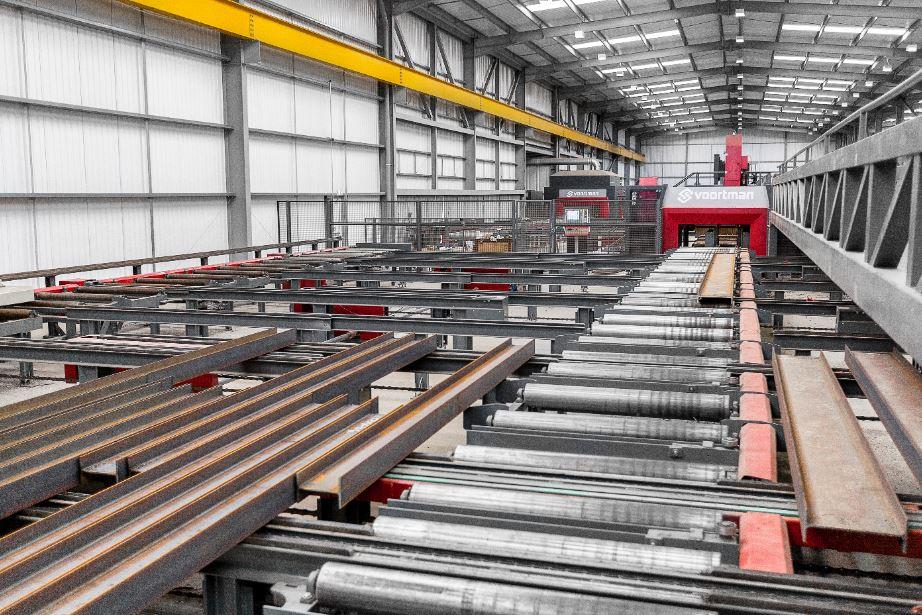Innovative Fads in Steel Manufacture: Enhancing Sturdiness and Accuracy
In the realm of steel construction, the pursuit of sturdiness and accuracy has actually resulted in a wave of ingenious patterns that are improving the industry. From advancements in welding technologies to the assimilation of robotic automation in fabrication procedures, the landscape of steel manufacturing is evolving quickly. High-strength alloy advancement, coupled with the usage of 3D modeling and simulation software, is pushing the borders of what is attainable in regards to structural integrity and precision. In addition, the expanding focus on sustainable methods in steel manufacturing is not just driving effectiveness however also promoting a more ecologically mindful approach to fabrication. These patterns are not just shaping the existing yet additionally preparing for the future of steel manufacture, assuring more improvements in toughness and accuracy.
Advanced Welding Technologies
In the world of steel construction, the fostering of cutting-edge welding innovations has substantially revolutionized the industry's technique to attaining premium high quality and precision in architectural welds. Advanced welding innovations, such as laser light beam welding and friction stir welding, have actually emerged as game-changers in the field. By leveraging these sophisticated welding methods, steel fabricators can elevate the longevity, stamina, and precision of their structural welds, meeting the increasingly demanding demands of contemporary building and construction jobs.
Robot Automation in Construction
Accepting robotic automation has actually come to be a cornerstone of modern steel fabrication methods, simplifying procedures and enhancing effectiveness throughout the sector. Robots are transforming the method steel elements are manufactured, using unequaled accuracy and speed while decreasing human mistake. These automated systems can deal with repeated jobs with constant precision, leading to better final result.
One secret advantage of robotic automation in steel construction is the capability to function around the clock without fatigue, significantly boosting production result. This continual procedure lessens downtime and speeds up project timelines, ultimately conserving costs for suppliers. Additionally, robots can be configured to carry out elaborate jobs that may be challenging or harmful for human workers, boosting safety in the work environment.
In addition, robotic automation enables seamless combination with other digital modern technologies, such as computer-aided layout (CAD) software application and Net of Points (IoT) systems (steel fixing). This interconnected approach boosts interaction in between various stages of manufacture, enhancing process and guaranteeing real-time monitoring and control. As the steel manufacture sector remains to develop, robotic automation sticks out as a transformative pressure driving performance and precision in producing procedures

High-Strength Alloy Development
The improvement of high-strength alloy advancement in steel manufacture is reshaping the sector's strategy to improving product resilience and efficiency. High-strength alloys are crafted to display remarkable mechanical homes, such as increased tensile strength, strength, and deterioration resistance compared to conventional steel qualities. By incorporating these advanced alloys right into manufacture procedures, producers can produce elements that stand up to greater stress degrees and rough settings, bring about more trustworthy and sturdy final product.
One key benefit of high-strength alloy advancement is the ability to minimize material density without endangering architectural honesty. This not just results in lighter-weight parts but also contributes to set you back savings and improved efficiency in construction and setting up procedures. The boosted strength-to-weight ratio of these alloys enables for the design and construction of structures with greater navigate to this website load-bearing abilities while lessening general weight.
3D Modeling and Simulation Software
Improvements in steel manufacture processes have been significantly moved by the integration of innovative 3D modeling and simulation software application devices. These tools enable makers to develop thorough online designs of their jobs, enabling them to picture the last item with accuracy before any kind of physical work begins.

Sustainable Practices in Steel Manufacturing
Integrating lasting methods into steel production procedures is necessary for decreasing environmental effect and making sure lasting resource schedule. One essential sustainable method is the adoption of energy-efficient technologies to decrease greenhouse gas discharges throughout the steel manufacturing process. This consists of making use of renewable resource sources, such as solar or wind power, to power steel plants and implementing energy-efficient devices to optimize power use.
An additional vital facet of lasting steel manufacturing is the accountable sourcing of raw materials. This involves guaranteeing that the iron ore and various other sources made use of in steelmaking are obtained from moral and ecologically friendly sources. By advertising openness in the supply chain and adhering to strict ecological criteria, steel suppliers can reduce the unfavorable effects of resource removal on Look At This regional environments and areas.

Final Thought
To conclude, the ingenious patterns in steel fabrication such as sophisticated welding modern technologies, robotic automation, high-strength alloy growth, 3D modeling and simulation software program, and lasting methods are boosting the resilience and precision of steel products. These developments are revolutionizing the steel manufacture market by enhancing sustainability, quality, and effectiveness. It is clear that the future of steel fabrication hinges on embracing these advanced modern technologies to meet the needs of modern-day building and manufacturing sectors.
In the world of steel fabrication, the pursuit of durability and accuracy has led to a wave of innovative fads that are improving the industry.In the world of steel manufacture, the website link fostering of innovative welding technologies has dramatically reinvented the market's strategy to accomplishing premium high quality and precision in architectural welds. As the steel construction sector continues to advance, robotic automation stands out as a transformative pressure driving performance and precision in producing procedures.
Additionally, recycling and recycling steel scrap and waste materials play a substantial function in enhancing the sustainability of steel production. metal fabrication melbourne.In verdict, the cutting-edge fads in steel fabrication such as sophisticated welding modern technologies, robotic automation, high-strength alloy development, 3D modeling and simulation software application, and sustainable methods are boosting the sturdiness and precision of steel products